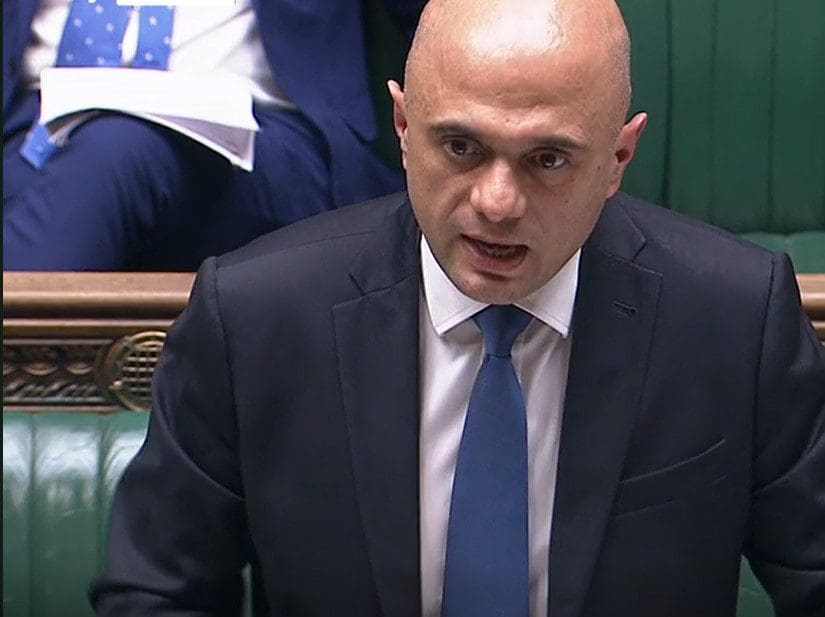

Why Did Sajid Javid Tell Parliament that Daily Covid Infections are 16 Times Higher Than the Latest ONS Estimate?
According to Health Secretary Sajid Javid, there are currently 4,713 confirmed Omicron infections in the U.K. But in his statement to Parliament yesterday he added that the UKHSA has estimated the true current number of new daily Omicron infections to be around 200,000 (I assume in England, though he didn’t say). He added that this represents around 20% of the current estimated daily infections in England, including 44% in London. Note that these UKHSA figures are based on modelling that has not been released to the public.
Separately, the UKHSA has reported that just 10 people so far have been admitted to hospital in England with the Omicron variant (most of whom are double-vaccinated).
On transmissibility, early UKHSA estimates for the household secondary attack rate (the proportion of household contacts an infected person infects) using contact tracing data is 21.6% for Omicron and 10.7% for Delta. This suggests Omicron (incidentally, pronounced with a short ‘O’ as in orange, not a long ‘O’ as in over – omega is the Greek letter that signifies a long O) may be around twice as transmissible as Delta in the current population. However, to put this in context, note that the Alpha direct secondary attack rate in December 2020 was estimated by the UKHSA at 15.5%, while the Omicron estimate is based on a small number of infections and, according to the UKHSA, “may be influenced by improved ascertainment around Omicron cases”. The equivalent figure for “Omicron confirmed, highly probable, probable or possible” is 15.2%. In any case, even on the likely inflated figure of 21.6% it means that only around one in five household contacts of those with Omicron go on to test positive, and the difference in absolute terms between Omicron and earlier variants is only that 5-10% more of a person’s contacts become infected.
New daily reported infections in Gauteng province, South Africa, the original epicentre of Omicron, continue to plateau with no rise for over a week now.
The threat from Omicron therefore appears to be being hugely exaggerated. That includes in the figures quoted by the Health Secretary in Parliament. For if, as Mr Javid implied, 200,000 daily Omicron infections in England is 20% of the total, then the Government must believe there to be currently around one million daily SARS-CoV-2 infections in England, or seven million a week. It’s very hard to square that with the latest ONS estimate that in the week ending December 1st, 891,500 people in England were infected with SARS-CoV-2. Since that is a prevalence estimate, you can roughly halve it to get a weekly incidence estimate (assuming people test positive on average for two weeks), giving 445,750 new weekly infections. That means the UKHSA is estimating a weekly incidence figure roughly 16 times or 1,500% higher than the ONS’s most recent estimate. That simply isn’t plausible and the Government needs to do a much better job of calibrating its data estimates, particularly when providing information to lawmakers ahead of a crucial vote.
What’s more, the number of daily infections in England reported on the Government dashboard for the week ending December 1st is around 37,500, which gives a weekly figure of around 262,500. That means, if we take the ONS estimates as the reality, the Government’s testing programme is only finding around 59% of weekly infections. That means fully 41% of all SARS-CoV-2 infections, or 183,250 every week, are being missed completely. What is the point of all this testing, tracing and isolating if not far off a half of all infections, nearly two hundred thousand a week, are being missed entirely?
That problem is dwarfed, however, by the situation if you take the UKHSA’s incidence estimate as the real situation, as the Health Secretary yesterday implied that MPs should. In that case, the Government is only finding a measly 4.2% of infections each week (using the daily dashboard figure for the most recent week of 42,000 a day or 294,000 a week). Of course, the UKHSA estimate is totally implausible and it is disgraceful that it was presented to Parliament at all. But assuming it to be true, it would mean the test and trace system was even more completely useless.
In truth, while test and trace is pointless even on ONS estimates, as it misses over 40% of infections, it isn’t as bad as the ludicrous UKHSA estimate would imply. It is a scandal that the UKHSA’s obviously wayward, inflated modelling was presented to MPs ahead of today’s vote.








